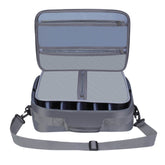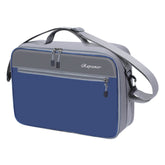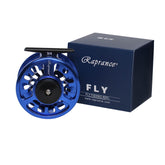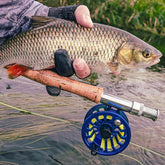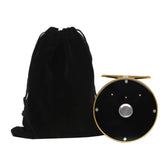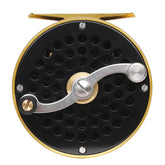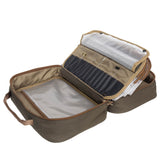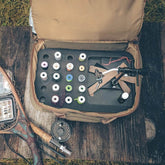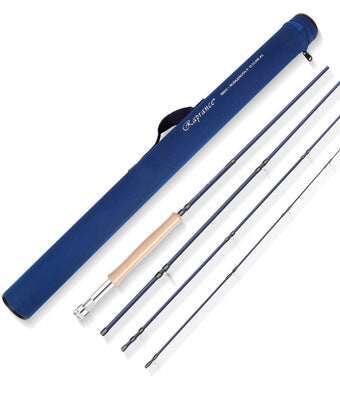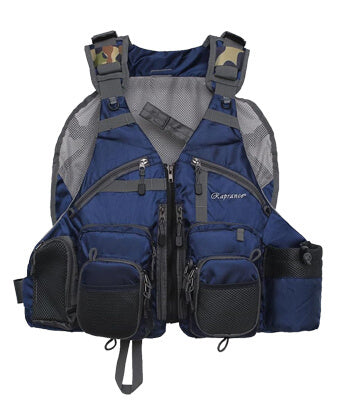Flies: Essential Handmade Kits for Beginner Fly Fishing
Fly fishing offers a unique and rewarding experience, especially when it comes to selecting the right flies for your catch. With various options available, including handmade flies kits and beginner fly fishing kits, anglers can easily find what they need to succeed. Understanding the different types of flies, such as dry flies and nymph flies, is crucial for attracting species like trout and bass in different stream environments.

As I explore the world of fly fishing, I'm constantly amazed at how the right fly can make all the difference. A well-equipped dry flies kit or a nymph flies kit can enhance your fishing adventures, allowing for greater versatility on the water. I’ve learned that experimenting with different flies tailored to specific fish behavior can lead to more successful outings.
Whether you’re casting lines into serene streams or challenging lakes, being prepared with the right fly fishing gear is essential. Investing in quality flies and kits not only boosts my confidence as an angler but also makes for a more enjoyable fishing experience.
Fundamentals of Fly Fishing
Fly fishing involves specific techniques and equipment tailored to mimic the natural movement and appearance of fish prey. Understanding the essentials will enhance your fishing experience.
Understanding Fly Fishing Equipment
The right equipment is crucial for successful fly fishing. Key components include the fly rod, reel, line, and flies.
- Fly Rod: Typically lightweight, allowing for better control and casting.
- Reel: Helps to manage the line and provides balance during reeling in a fish.
- Fly Line: Specific line types are designed for different fishing techniques, such as floating for dry flies or sinking for nymphs.
When selecting flies, it's important to consider hooks, feathers, and various types, including streamers, dry flies, wet flies, and emergers. Each type imitates different stages of aquatic life, allowing me to target a range of fish.
Selecting the Right Handmade Flies Kit
Choosing the right handmade flies kit can significantly improve success rates. A beginner's kit typically includes a range of flies suitable for different conditions.
Focus on kits containing:
- Nymph Flies: Great for fishing below the surface, mimicking immature aquatic species.
- Dry Flies: Designed to float on the water's surface, imitating adult insects.
- Streamers: Larger flies that imitate fish or other prey.
Make sure the kit has a mix of sizes and colors to adapt to changing fish preferences. This variety enables me to match the hatch effectively, increasing my chances of attracting fish.
Fly Fishing Kits for Beginners

Selecting the right fly fishing kit is crucial for beginners. These kits come with essential components that facilitate an easier learning experience. Additionally, choosing a kit tailored to individual needs can enhance success in this rewarding sport.
Components of a Beginner Fly Fishing Kit
A beginner fly fishing kit typically includes several key components.
- Rod and Reel: A quality rod, usually around 9 feet, paired with an appropriate reel is fundamental for casting.
- Line: Fly line, often floating, aids in the delivery of flies. It's important that it matches the rod weight.
- Leader and Tippet: These sections of line help connect the fly to the main line. Tippet material's diameter can affect the presentation of the fly.
- Flies: Expect a mix of dry flies, nymphs, and streamers. Dry flies float on the surface, while nymphs mimic aquatic insects below.
- Waterproof Fly Box: This protects your flies from the elements and makes organization convenient.
The right kit will often also include additional accessories, such as forceps or scissors for on-the-water adjustments.
Choosing a Beginner Fly Fishing Kit
When choosing a beginner fly fishing kit, consider factors like location and target fish species. Different environments may require specific flies and tackle.
- Water Type: Still water and moving water will need different approaches.
- Species Targeted: If fishing for trout, typical flies include a variety of dry flies and nymphs.
Look for kits that include:
- Quality Materials: Opt for brass or tungsten beads on flies for added weight and better sinking.
- Versatility: A kit that includes both dry flies and nymphs provides options across conditions.
Always check reviews to ensure the kit’s reliability and effectiveness as you embark on your fly fishing journey.
Specialized Flies Kits

In my exploration of specialized flies kits, I have found distinct advantages in dry flies and nymph flies kits. Each type provides unique opportunities for effective fly fishing, depending on the conditions and species targeted.
Essentials of a Dry Flies Kit
A dry flies kit is essential for surface fishing, as it features flies designed to float on the water's surface. Key components include:
- Flies: Patterns like Adams, Elk Hair Caddis, and Royal Wulff mimic various insects.
- Quality Materials: Durable materials ensure longevity, while buoyant foam or hackle keeps flies afloat.
- Floatant: Apply a floatant to maintain the fly's buoyancy.
- Sizes: A range of sizes is crucial to match the hatch prevalent in your fishing area.
This kit is particularly beneficial during times when fish are actively feeding on the surface, turning fishing into a visually engaging experience.
Nymph Flies Kit and Technique
A nymph flies kit focuses on imitating the underwater life stages of insects. Key aspects of this kit include:
- Nymph Patterns: Flies like Hare's Ear, Pheasant Tail, and Copper John effectively mimic various nymphs.
- Weighting: Most nymphs are weighted to sink quickly, making them accessible to fish below the surface.
- Indicator: Using a strike indicator helps detect subtle bites when fishing nymphs.
- Presentation: I often employ a dead-drift technique, allowing the fly to flow naturally with the current.
Nymph fishing can yield impressive results, particularly during hatches or when fish are holding deeper in the water column.

